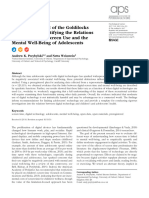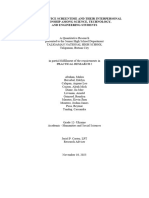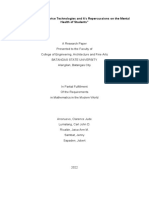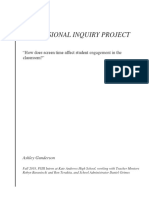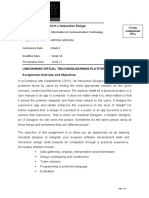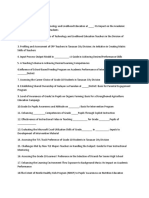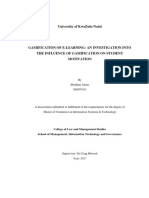0% found this document useful (0 votes)
18 views18 pages0008 Research (Final) 0008
This study investigates the effects of prolonged screen exposure on the mental health of Grade 11 CSS ICT students at Arteche National High School, emphasizing the need for qualitative insights into their experiences. It identifies a research gap in understanding the psychological impacts of extended screen time, aiming to provide actionable recommendations for healthier digital practices. Utilizing a phenomenological approach, the research seeks to explore personal narratives and perceptions to inform educators, parents, and policymakers.
Uploaded by
vladi.mireer123Copyright
© © All Rights Reserved
We take content rights seriously. If you suspect this is your content, claim it here.
Available Formats
Download as DOCX, PDF, TXT or read online on Scribd
0% found this document useful (0 votes)
18 views18 pages0008 Research (Final) 0008
This study investigates the effects of prolonged screen exposure on the mental health of Grade 11 CSS ICT students at Arteche National High School, emphasizing the need for qualitative insights into their experiences. It identifies a research gap in understanding the psychological impacts of extended screen time, aiming to provide actionable recommendations for healthier digital practices. Utilizing a phenomenological approach, the research seeks to explore personal narratives and perceptions to inform educators, parents, and policymakers.
Uploaded by
vladi.mireer123Copyright
© © All Rights Reserved
We take content rights seriously. If you suspect this is your content, claim it here.
Available Formats
Download as DOCX, PDF, TXT or read online on Scribd
/ 18















